THE TÁIN. CÚCHULAINN IN WARP SPASM, 1969 Louis le Brocquy HRHA (1916-2012)
Signature: signed and numbered on label on reverse Medium: Aubusson tapestry; (no. 2 from an edition of 9) Dimensions: 72½ x 50½in. (184.15 x 128.27cm) Provenance: Taylor Galleries, Dublin; Private collection Exhibited: Literature: Louis le Brocquy was living in France with his young family when he received a life-changing invitation, in December 1966. Publisher Liam Miller wanted him to collaborate with Thomas Kinsella on a new... w translation of Ireland's oldest saga. Le Brocquy penned an enthusiastic affirmative that Christmas Eve and spent much of the next three years visualising An Táin Bó Cúailgne. In September 1969, Dolmen Press published it as The Táin. The Táin was born of some eighty stories about the Ulaidh, a prehistoric people who lived in the north and north-western regions of what is now called Ireland. Part epic, part soap opera, the tales were vivid, vicious, inconsistent and often rather rude. Oral versions survived for long enough to be collected by scribes, whose fragmentary manuscripts are now in Trinity College and the Royal Irish Academy. Translators and writers such as Lady Gregory and W.B. Yeats had retold some of the Cúchulainn tales - and Joyce's Finnegans Wake drew on its meandering style - but Thomas Kinsella's Táin was the first widely-accessible version, especially when Oxford University Press' 1970 paperback followed the de luxe and limited editions produced by Dolmen Press. The Táin marked a unique cultural moment, for Ireland and the world. The State had just celebrated the 50th anniversary of the 1916 Rising and was driving ahead with Seán Lemass' Second Programme for Economic Expansion. By 1969 when it was published, Northern Ireland was in conflict, and global events such as the Prague Spring, the assassinations of Martin Luther King and Robert Kennedy, as well as wars in Vietnam, Angola and elsewhere, underlined its themes of invasion and carnage. Meanwhile, The Beatles sang "All You Need is Love." Its impact was instant. Although characters like Cúchulainn and Ferdia, Medb and Aillil, were local, the collaborators translated them into a crisply contemporaneous style that resonated through the cultural hierarchy. It engaged lovers of art, language, music and Celtic studies, as well as popular culture. The Táin became an Irish Iliad, with Cúchulainn as a Superhero reincarnating to a new age of rock, cartoons and animation. The images le Brocquy called 'shadows thrown by the text' became so iconic that it is almost impossible now to imagine The Táin differently. Yet no one had visualised the full saga previously and no artist from Ireland had engaged so thoroughly with pieces of writing in so collaborative a way. Le Brocquy made hundreds of drawings, many of which appear in the de luxe and limited editions, with a handful printed in the paperback and a precious twenty in these tapestries. Communication was difficult in those pre-digital days because he was in France and Miller was in Dublin, so that many key design decisions relied on sending letters through the post. Le Brocquy's innovative, daring approach cast the saga as a virtual alphabet composed of spontaneous, inky letters. The present work, Cúchulainn's Warp Spasm, speaks both of calligraphic marks from Sun Tzu's The Art of War and Yves Klein's bodily-marked Anthropometries, as well as cave paintings traced by prehistoric peoples. The translation into tapestry, via le Brocquy's Táin lithographs, crested on the momentum from oral to written traditions, from drama to poetry and from visual culture to music. Duché's subtly-textured cottons and wools freed le Brocquy's black-on-white marks into a textured, sensual material that illuminates the sense of a blot or stain without definite edges, which is what he wanted. Here, the statuesque shapes let le Brocquy grow the book's relatively modest scale into a life-affirming series of interconnected images that speak to each other like letters in a phrase or Medb Ruane, April 2012. [Abridged
THE TÁIN. CÚCHULAINN IN WARP SPASM, 1969 Louis le Brocquy HRHA (1916-2012)
Signature: signed and numbered on label on reverse Medium: Aubusson tapestry; (no. 2 from an edition of 9) Dimensions: 72½ x 50½in. (184.15 x 128.27cm) Provenance: Taylor Galleries, Dublin; Private collection Exhibited: Literature: Louis le Brocquy was living in France with his young family when he received a life-changing invitation, in December 1966. Publisher Liam Miller wanted him to collaborate with Thomas Kinsella on a new... w translation of Ireland's oldest saga. Le Brocquy penned an enthusiastic affirmative that Christmas Eve and spent much of the next three years visualising An Táin Bó Cúailgne. In September 1969, Dolmen Press published it as The Táin. The Táin was born of some eighty stories about the Ulaidh, a prehistoric people who lived in the north and north-western regions of what is now called Ireland. Part epic, part soap opera, the tales were vivid, vicious, inconsistent and often rather rude. Oral versions survived for long enough to be collected by scribes, whose fragmentary manuscripts are now in Trinity College and the Royal Irish Academy. Translators and writers such as Lady Gregory and W.B. Yeats had retold some of the Cúchulainn tales - and Joyce's Finnegans Wake drew on its meandering style - but Thomas Kinsella's Táin was the first widely-accessible version, especially when Oxford University Press' 1970 paperback followed the de luxe and limited editions produced by Dolmen Press. The Táin marked a unique cultural moment, for Ireland and the world. The State had just celebrated the 50th anniversary of the 1916 Rising and was driving ahead with Seán Lemass' Second Programme for Economic Expansion. By 1969 when it was published, Northern Ireland was in conflict, and global events such as the Prague Spring, the assassinations of Martin Luther King and Robert Kennedy, as well as wars in Vietnam, Angola and elsewhere, underlined its themes of invasion and carnage. Meanwhile, The Beatles sang "All You Need is Love." Its impact was instant. Although characters like Cúchulainn and Ferdia, Medb and Aillil, were local, the collaborators translated them into a crisply contemporaneous style that resonated through the cultural hierarchy. It engaged lovers of art, language, music and Celtic studies, as well as popular culture. The Táin became an Irish Iliad, with Cúchulainn as a Superhero reincarnating to a new age of rock, cartoons and animation. The images le Brocquy called 'shadows thrown by the text' became so iconic that it is almost impossible now to imagine The Táin differently. Yet no one had visualised the full saga previously and no artist from Ireland had engaged so thoroughly with pieces of writing in so collaborative a way. Le Brocquy made hundreds of drawings, many of which appear in the de luxe and limited editions, with a handful printed in the paperback and a precious twenty in these tapestries. Communication was difficult in those pre-digital days because he was in France and Miller was in Dublin, so that many key design decisions relied on sending letters through the post. Le Brocquy's innovative, daring approach cast the saga as a virtual alphabet composed of spontaneous, inky letters. The present work, Cúchulainn's Warp Spasm, speaks both of calligraphic marks from Sun Tzu's The Art of War and Yves Klein's bodily-marked Anthropometries, as well as cave paintings traced by prehistoric peoples. The translation into tapestry, via le Brocquy's Táin lithographs, crested on the momentum from oral to written traditions, from drama to poetry and from visual culture to music. Duché's subtly-textured cottons and wools freed le Brocquy's black-on-white marks into a textured, sensual material that illuminates the sense of a blot or stain without definite edges, which is what he wanted. Here, the statuesque shapes let le Brocquy grow the book's relatively modest scale into a life-affirming series of interconnected images that speak to each other like letters in a phrase or Medb Ruane, April 2012. [Abridged

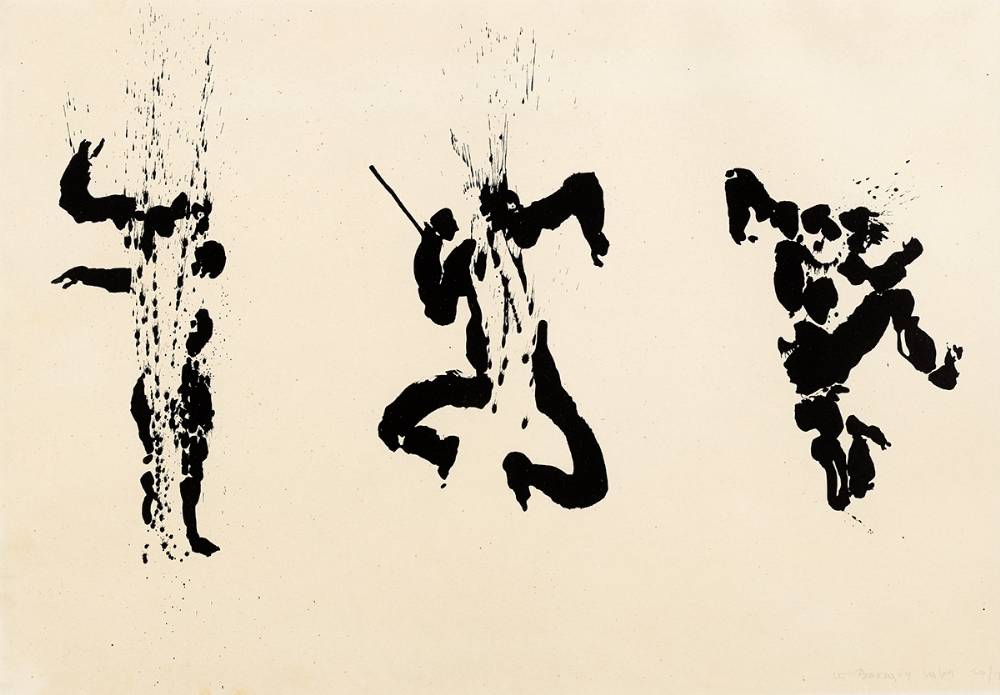






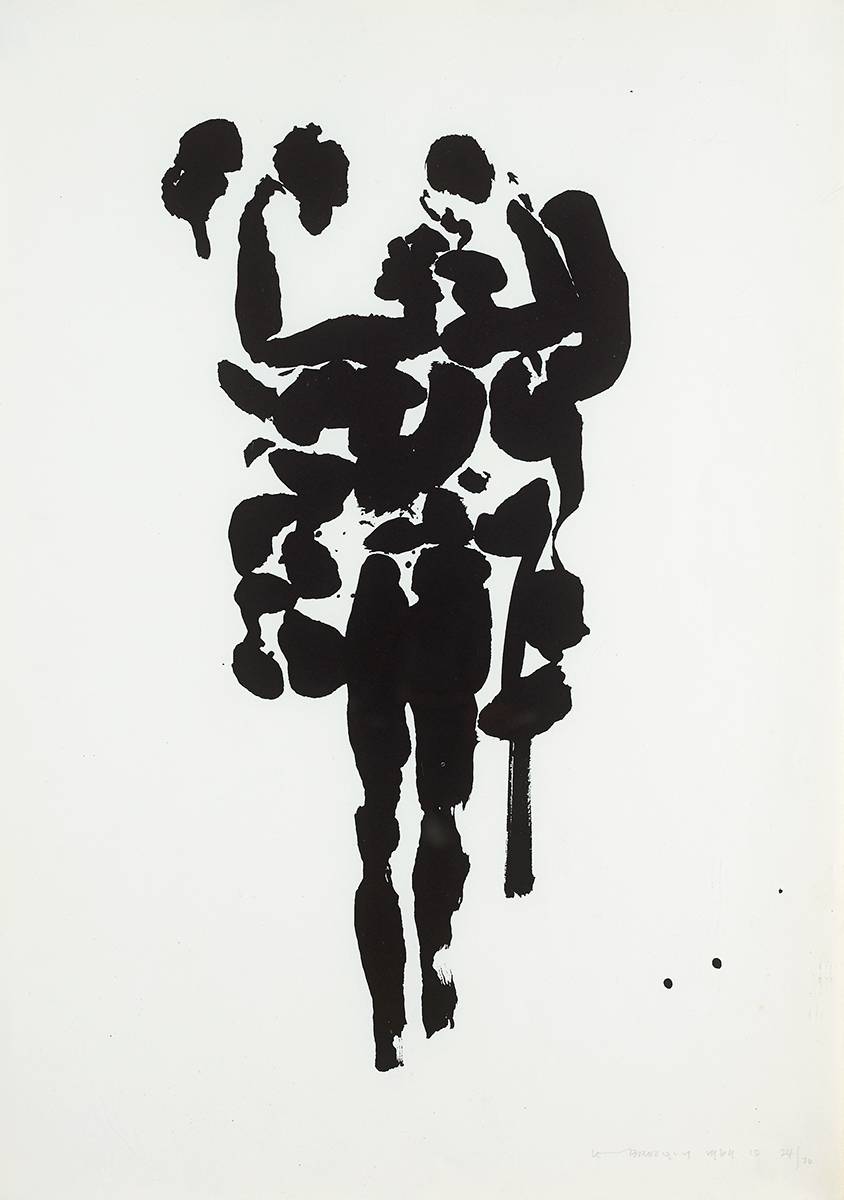
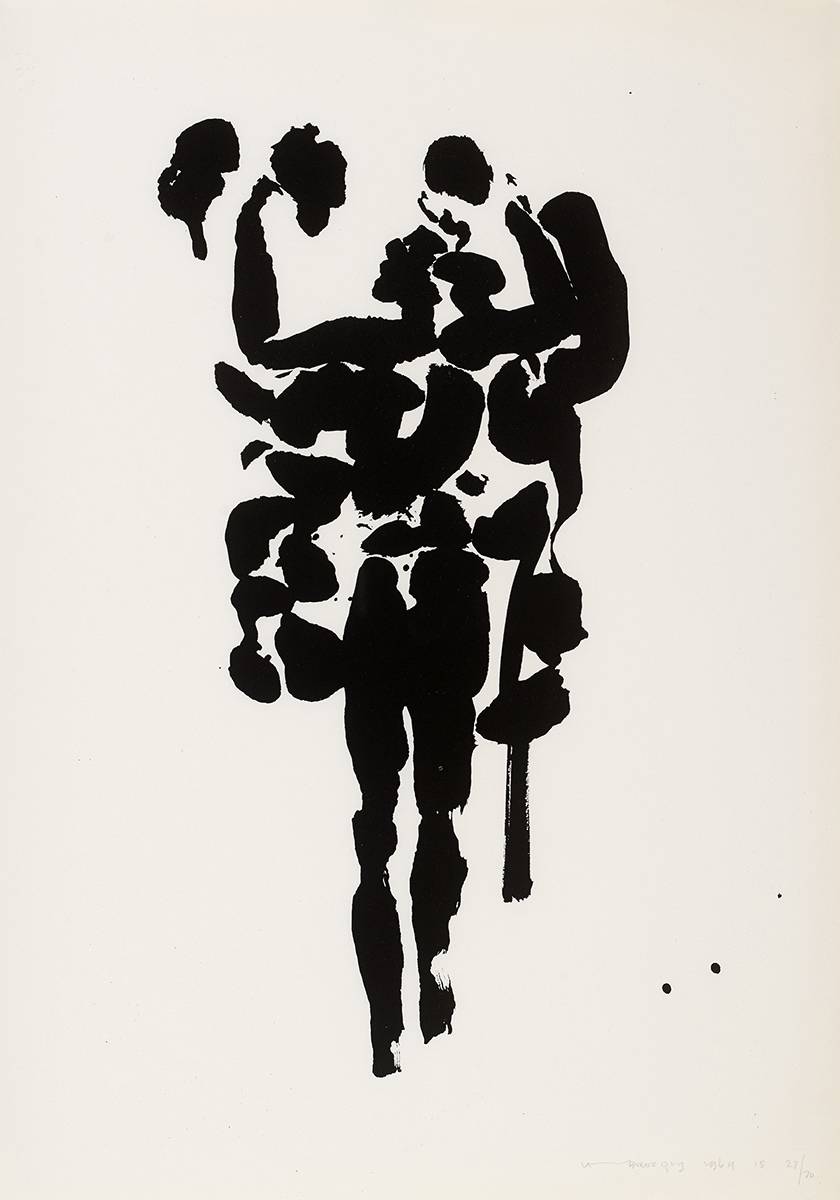
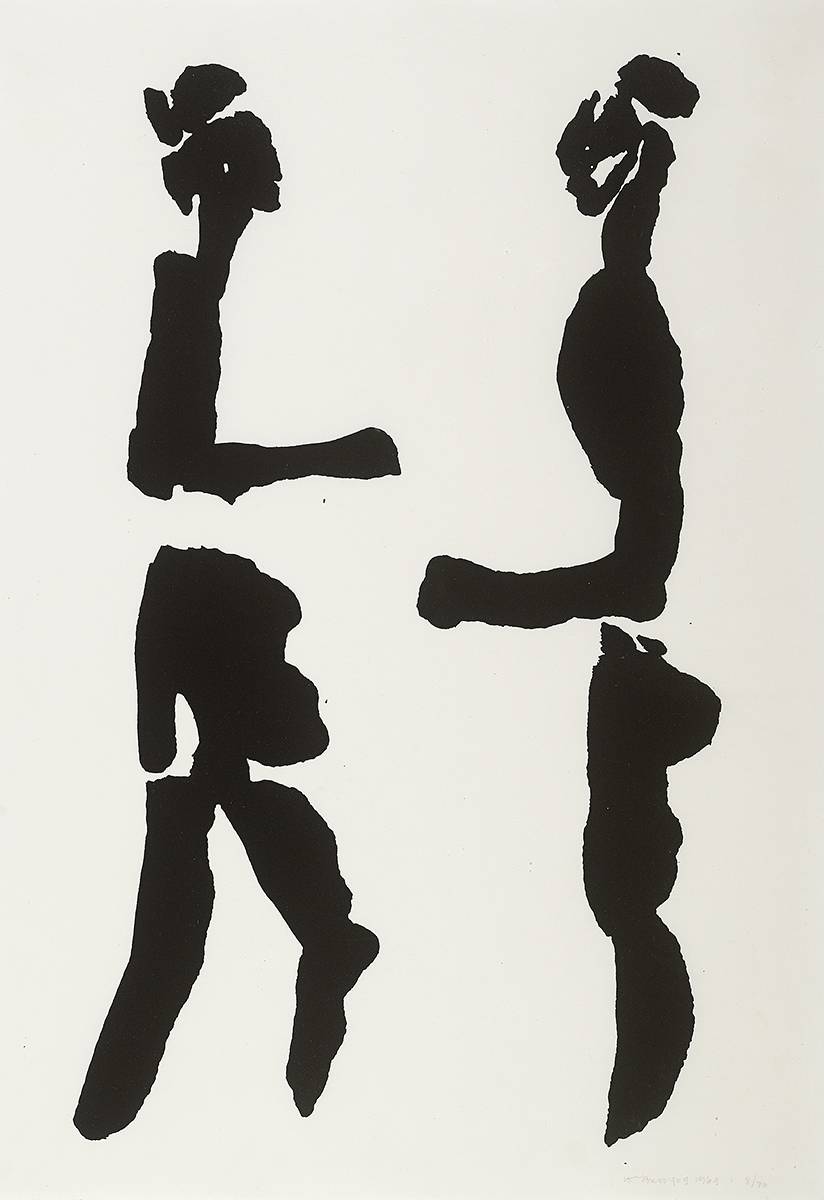
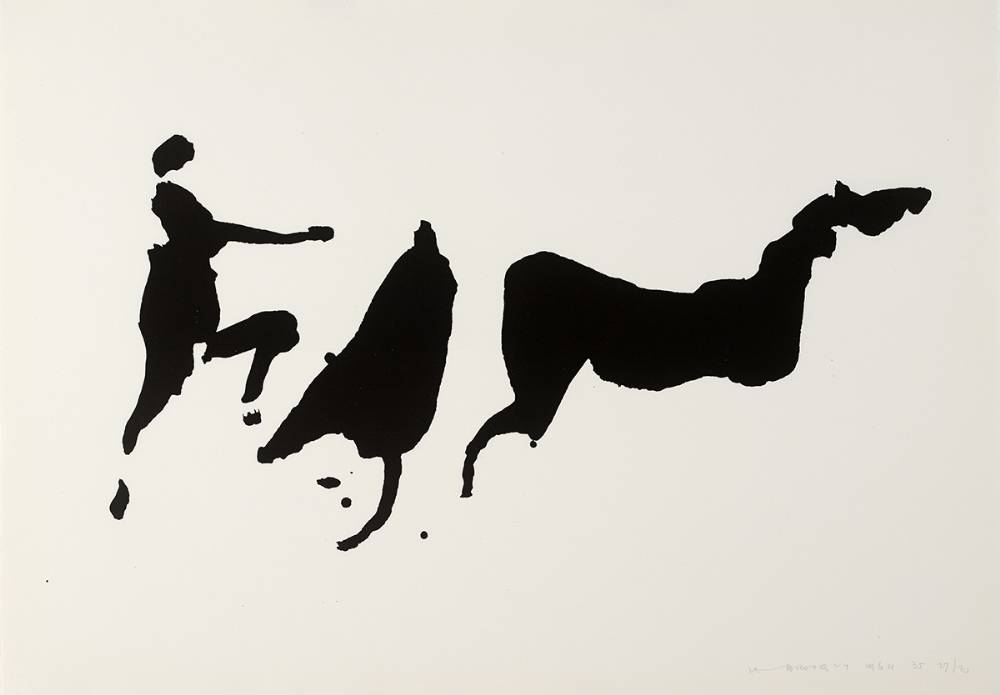
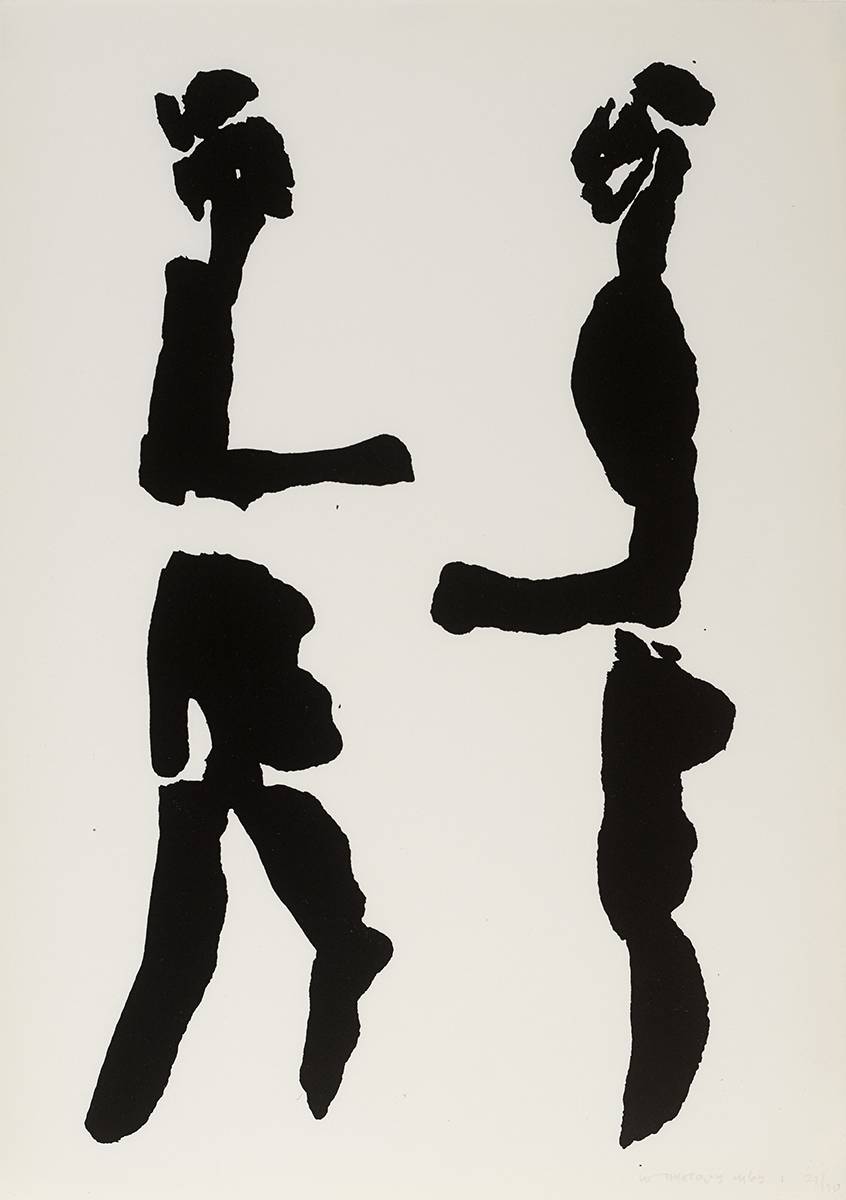

Try LotSearch and its premium features for 7 days - without any costs!
Be notified automatically about new items in upcoming auctions.
Create an alert